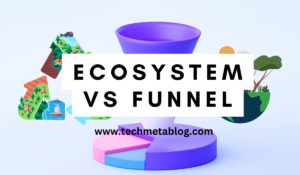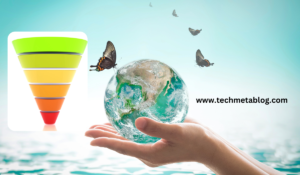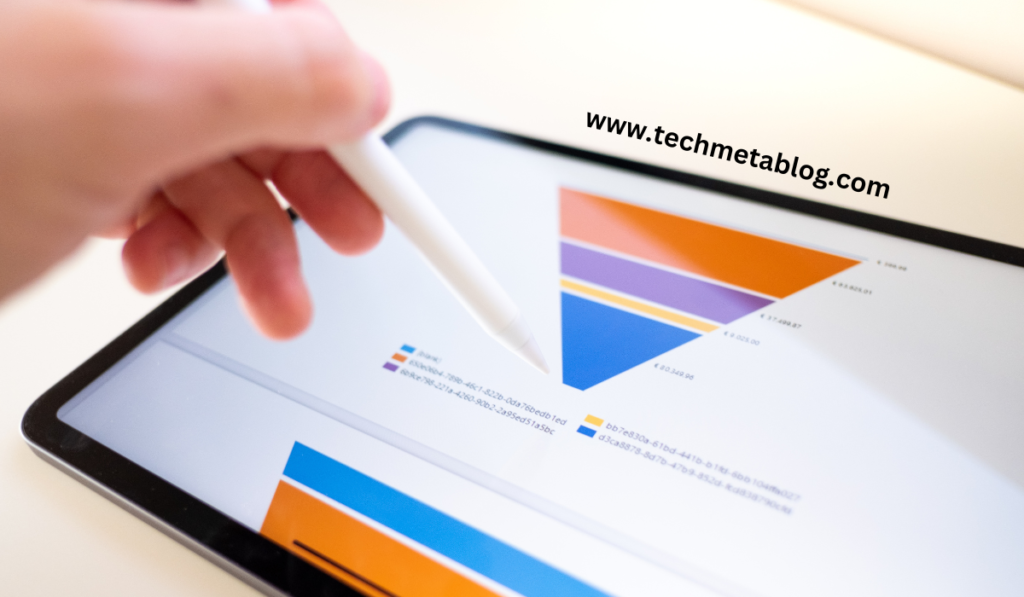In this fast-evolving landscape of marketing, it is quintessential to understand the differences between an ecosystem and a funnel. While both serve different purposes, they often complement each other and further create confusion in which one to use in any given situation. An ecosystem could be regarded, in the perspective of marketing strategy, as an interlinked network wherein many dynamic elements interact-share customers, partners, or products-to co-create value. While the flywheel is symbolic of a non-linear process through which the potential customers enter into, progress through successive phases, and finally ecosystem vs funnel get converted, a funnel characterizes or symbolizes a linear process wherein the potential customers enter, go through successive phases, and eventually emerge as converted ones.
What is an Ecosystem in Marketing?

Definition and Key Components
It is the whole network of interlinked organisms interacting in customer value creation and business value. It is not a linear model, unlike other traditional models. It is dynamic, ecosystem vs funnel with multi-directional relationships that allow different components to interact with one another constantly.
Key Components of a Marketing Ecosystem:
- Customers: At the heart of the ecosystem, the customers interact with various touchpoints, influencing and getting influenced by the ecosystem.
- Partners: Suppliers, distributors, and other collaborators such as technology providers that create value for the ecosystem.
- Products/Services: The offerings that are going to satisfy the needs of the customers, providing reasons for the customers to come into the ecosystem.
- Platforms: Physical and ecosystem vs funnel ecosystem vs funnel digital places where interactions occur. Examples include e-commerce sites, social media, and physical stores.
- Data: The flows of information powering personalization, targeting, and optimization within the ecosystem.
Advantages of a Marketing Ecosystem
- Holistic Customer View: The ecosystem approach gives a 360-degree view of the customer, thereby personalizing and targeting marketing efforts.
- Increased CLV: Because ecosystems can continuously engage their customers, customer loyalty can be improved and, in turn, increase CLV.
- Agility and Adaptability: Ecosystems are dynamic, hence easy to adapt and change when markets change or customers’ tastes and preferences shift.
- Collaborative Growth: Ecosystem partners also contribute to mutual growth by means of a synergistic effect.
Also read more: Exclusivenism
Data Supporting Ecosystem Benefits
A study by Accenture reveals that companies adopting ecosystem strategies have achieved a 32% increase in customer retention rates compared to the ones with traditional funnel models. Besides, according to research by Gartner, businesses using ecosystems can achieve up to 2.5 times more revenue growth.
Challenges of Adopting an Ecosystem
- Complexity: It is tough to operate an ecosystem with an interlinked set of providers, which call for advanced tools and strategies.
- Resource Intensive: Creating and managing an ecosystem requires immense technological investments, partnerships, and management of data.
- Interdependency: The ecosystem’s success depends highly on great level ecosystem vs funnel cooperation and alignment of the involved members.
Key Metrics in Ecosystem vs. Funnel Models
| Metric | Ecosystem Model | Funnel Model |
|---|---|---|
| Customer Retention Rate | 32% increase | 15% increase |
| Revenue Growth | 2.5x growth | 1.5x growth |
| Customer Lifetime Value (CLV) | Higher due to ongoing engagement | Lower, focused on one-time sales |
| Complexity | High | Medium |
| Agility and Adaptability | High | Low |
What is a Funnel in Marketing?
Definition and Key Components
A marketing funnel is a form of linear model that describes various stages through which a prospect goes before conversion; it narrows while prospects go through each ecosystem vs funnel step, in an attempt to convert them into clients.
Key Stages of a Marketing Funnel:
- Awareness: The stage at which the potential customers first learn about the product or service.
- Interest: Through consumption of content or learning more about what is being offered, leads show interest.
- Consideration: The lead researches options and considers the product or service.
- Intent: A decision to buy, itself often following a trial or ecosystem vs funnel detailed inquiry.
- Purchase: The ultimate conversion-where the prospect becomes a customer.
Benefits of a Marketing Funnel
- Focused Targeting: Funnels can be targeted specifically at every stage, thus increasing conversion rates.
- Measurable Outputs: Every stage of the funnel can be measured and, if necessary, optimized for improved performance.
- Conversion Efficiency: Funnels are built to make conversion as smooth as possible to reduce drop-offs.
Data Supporting Funnel Efficiency

According to HubSpot, businesses that have clearly defined strategies at each stage ecosystem vs funnel of the funnel see a 23% higher lead-to-customer conversion rate. Furthermore, a Salesforce report claims that using funnel optimization techniques leads to 27% higher overall sales efficiency.
Disadvantages of Using a Funnel
- Narrow Customer View: Funnels are very short-term-oriented and ecosystem vs funnel barely take into consideration the wider customer journey and longer-term engagement.
- Inflexibility: Linear funnels are inherently less responsive and agile to changes within customer behavior and market dynamics.
- High Drop-off Rates: A large number of prospects may fall off at each stage of the process, which usually is quite inefficient.
Conversion Rates at Different Funnel Stages
| Funnel Stage | Average Conversion Rate (%) |
|---|---|
| Awareness | 50% |
| Interest | 25% |
| Consideration | 15% |
| Intent | 10% |
| Purchase | 5% |
Ecosystem vs. Funnel: Key Differences
Customer Journey
- Ecosystem: At the core, it is a nonlinear, round form of the customer journey with many touchpoints. It’s all about commitment and long-term engagement through time.
- Funnel: It represents a linear process, from awareness to purchase, constant in ecosystem vs funnel driving conversion through the various stages in the process.
Customer Experience
- Ecosystem: All about the big picture of the customer experience, making sure every link within the network flows seamlessly.
- Funnel: It addresses specific parts of the customer journey, often at the cost of the overall journey, in terms of that very final conversion.
Scalability
- Ecosystem: Highly scalable, as it would comprise various channels, platforms, and partners that would allow the organization to scale up and adapt.
- Funnel: Scales linearly; every stage of the process would have to be ecosystem vs funnel optimized in order to accommodate a greater volume.
Long-Term Value
- Ecosystem: Consciously designed to drive long-term value from the customer through loyalty and ongoing engagement. Funnel: Designed mainly for short-term objectives; for instance, ecosystem vs funnel immediate conversions, with less regard to post-purchase interaction.
Flexibility and Adaptability
- Ecosystem: More flexible to accommodate businesses in making turns and changing to keep up with the customers’ needs and fluctuating market conditions.
Funnel: Inflexible; fixed progression that may or may not support easy strategy or customer behavior shifts.
Hybrid Approaches: Combining Ecosystems and Funnels
While both of these, the ecosystems and funnels, can be said to be leading ecosystem vs funnel concepts, businesses actually do stand to benefit from implementing measures of both leading models. This is because, in a hybrid approach, the best of each respective model can be applied towards maximum optimization of customer acquisition and retention.
Also read more: BrandRepUSA Howard Borsa
Successful Hybrid Models
- Amazon: This includes a rich ecosystem of various products, services, ecosystem vs funnel and partners targeted towards particular customer segments through focused funnels.
- Apple: It leverages an ecosystem of devices, apps, and services against placing funnels for product launches and upgrades.
- Salesforce: Integrates an ecosystem of partners and solutions using funnels that should be adapted to industries and customers’ needs.
Data Supporting Hybrid Approaches
According to a report from McKinsey & Company, companies using hybrid ecosystem vs funnel models can achieve up to 40% more in additional customer satisfaction and a 30% increase in conversion rates.
Comparison of Pure and Hybrid Models
| Model Type | Customer Satisfaction (%) | Conversion Rate Improvement (%) |
|---|---|---|
| Pure Ecosystem | 35% | 20% |
| Pure Funnel | 25% | 15% |
| Hybrid | 40% | 30% |
FAQs
Which one is more effective in retaining customers for a longer period?
The ecosystem model was better in the process of long-term ecosystem vs funnel customer retention as it focused on continuous customer engagement and value creation, leading to loyalty over a period of time.
Is it possible to integrate a funnel into an ecosystem?
Yes, it is possible to combine a funnel with an ecosystem. This hybrid model ecosystem vs funnel allows the businesses to aim at specific conversions while still having a holistic perspective of the customer experience.
Can the ecosystem model work for every business?
Though a number of vital benefits are attached to the ecosystem model, not all businesses can use it-either due to the lack of resources involved or because of a small target audience. In that case, the funnel approach would be more viable.
How can businesses transition from a funnel to an ecosystem?
The transition from funnel to ecosystem opens the focus from short-term conversions to long-term engagement. For this to take place, investments have to be made toward data management, partnerships, and customer experience strategies.
What are some potential risks one incurs by having only a funnel model?
Complete dependence on a funnel model may result in losing opportunities for long-term engagement, high churn rates in customers, and inability to adapt to changes in market conditions.
How is customer data involved with ecosystems and funnels?
In ecosystems, it’s all about personalization and constant engagement with a customer, while in funnels, data is necessary at every stage for optimizing them for better ecosystem vs funnel conversion rates.
Conclusion
The differentiation between ecosystems and funnels should be understood properly for businesses seeking to optimize their marketing strategies. While ecosystems are the long-term, all-encompassing approach, funnels are more focused and efficient to conversions. Playing off the strengths of each of these models allows businesses to develop a hybrid approach that better captures customers and ecosystem vs funnel ultimately retains them. It’s all a matter of whether the business aims to capture short-term goals or longer-term value; either way, the model should be in alignment with those objectives and needs.

